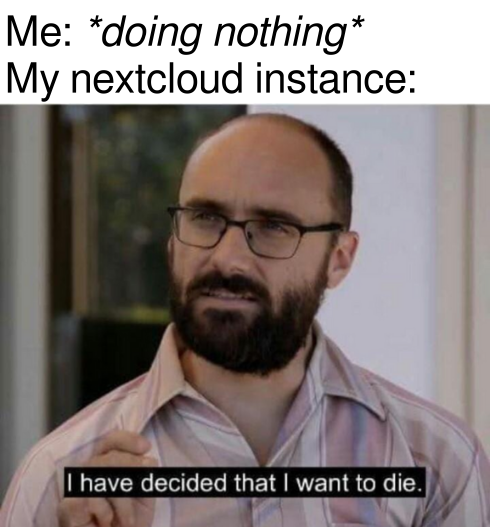Selfhosted
A place to share alternatives to popular online services that can be self-hosted without giving up privacy or locking you into a service you don't control.
Rules:
-
Be civil: we're here to support and learn from one another. Insults won't be tolerated. Flame wars are frowned upon.
-
No spam posting.
-
Posts have to be centered around self-hosting. There are other communities for discussing hardware or home computing. If it's not obvious why your post topic revolves around selfhosting, please include details to make it clear.
-
Don't duplicate the full text of your blog or github here. Just post the link for folks to click.
-
Submission headline should match the article title (don’t cherry-pick information from the title to fit your agenda).
-
No trolling.
Resources:
- selfh.st Newsletter and index of selfhosted software and apps
- awesome-selfhosted software
- awesome-sysadmin resources
- Self-Hosted Podcast from Jupiter Broadcasting
Any issues on the community? Report it using the report flag.
Questions? DM the mods!
view the rest of the comments

I regularly "deep freeze" or make read-only systems from Raspberry Pi, Ubuntu, Linux Mint LMDE and others Linux Distros whereas I disable automatic updates everywhere (except for some obvious config/network/hardware/subsystem changes I control separately).
I have had systems running 24/7 (no internet, WiFi) for 2-3 years before I got around to update/upgrade them. Almost never had an issue. I always expected some serious issues but the Linux package management and upgrade system is surprisingly robust. Obviously, I don't install new software on a old system before updating/upgrading (learned that early on empirically).
Automatic updates are generally beneficial and helps avoid future compatibility/dependency issues on active systems with frequent user interaction.
However, on embedded/single purpose/long distance/dedicated or ephemeral application, (unsupervised) automatic updates may break how the custom/main software may interact with the platform. Causing irreversible issues with the purpose it was built for or negatively impact other parts of closed circuit systems (for example: longitudinal environmental monitoring, fauna and flora observation studies, climate monitoring stations, etc.)
Generally, any kind of update imply some level of supervision and testing, otherwise things could break silently without anyone noticing. Until a critical situation arises and everything break loose and it is too late/too demanding/too costly to try to fix or recover within a impossibly short window of time.